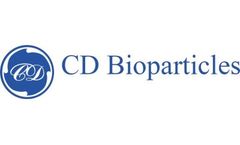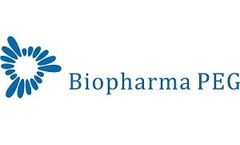Nanoparticle Articles & Analysis: This-Year
13 articles found
Idiopathic pulmonary fibrosis (IPF) is a devasting lung disease characterized by progressive scarring of lung tissue. As fibrosis develops, patients experience worsening shortness of breath, reduced lung capacity and ultimately respiratory failure. Current therapies for IPF rely on oral administration of pirfenidone and nintedanib, two FDA-approved drugs that slow disease progression. While ...
Virus-like particles (VLPs) have garnered significant attention in recent years for their potential applications in vaccine development, drug delivery, and as tools in various biotechnological fields. These nanoparticles mimic the structure of viruses but lack the viral genetic material that makes viruses infectious. ...
Microfluidic techniques show promise in producing liposomes and nanoparticles for drug delivery applications, as they can generate uniform formulations with controlled properties. ...
Whether it is medical research or drug manufacturing, tablet press is a vital link. Let's see how to choose the one that suits you best.Grand pack.The field of drug delivery is constantly evolving, driven by the core goal of improving therapeutic outcomes—enhancing efficacy, reducing toxicity, boosting patient compliance, and even enabling entirely new medical treatments. The global drug delivery ...
Since its first FDA-approved application in 1990 with Adagen® (pegademase bovine), PEGylation has been widely adopted in biopharmaceuticals, including proteins, peptides, antibodies, and nanoparticles. This article explores the mechanisms, benefits, challenges, and future prospects of PEGylation in drug development. ...
These technologies could pave the way for more personalized therapies, where recombinant chemokines or inhibitors are tailored to a patient’s unique chemokine signature. Furthermore, nanoparticle delivery systems are being explored to enhance the stability and targeted delivery of recombinant chemokines. ...
Platelet Membrane-Coated Biomimetic Nanoparticles for Drug Delivery Platelet membrane-coated nanoparticles have good application value. Nanotechnology developments have resulted in nanoparticles becoming common tools for tumor treatment. Uncoated drug-loaded nanoparticles (NPs) have limitations because they are quickly targeted ...
Taking those with ICT antigen test positive as the standard (136/156), the sensitivity is 87.2%. Comparing gold nanoparticles with latex beads, it can be observed that lateral flow assays using latex beads on the conjugation pad have higher sensitivity and specificity than assays using gold nanoparticles. ...
l Nanotechnology: Researchers are also exploring the use of nanotechnology to enhance the properties of bioglass. For example, nanoparticles of bioglass can be used to create more effective drug delivery systems or to improve the mechanical properties of the material. ...
ByMatexcel
For instance, HA-based scaffolds are being developed to promote bone regeneration, while HA nanoparticles are engineered to deliver drugs directly to cancer cells, minimizing side effects. ...
ByMatexcel
Encapsulating anticancer drugs within its lipid bilayer improves drug accumulation in target tissues while reducing toxicity to healthy cells.Immunomodulatory TherapyFunctionalized DSPE-PEG-Mannose nanoparticles can modulate immune responses by interacting with mannose receptors on immune cells, contributing to novel treatments for immune-related disorders.Cell Recognition and ...
Through the design and utilization of nanoparticles, drugs can be delivered more precisely to specific sites within the body. ...
Today, it is possible to produce different kinds of cell membrane-encapsulated nanoparticles — for example, red blood cell membrane nanoparticles, white blood cell (neutrophil, macrophage) membrane nanoparticles, platelet membrane nanoparticles, tumor cell membrane nanoparticles, stem cell membrane ...








